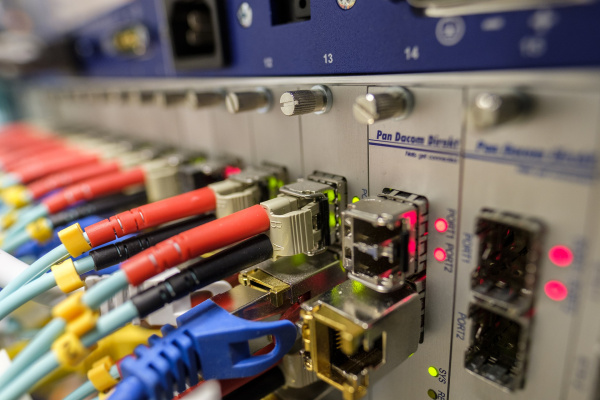Industrial Fiber Optics Hookup Guide
Getting Started with Fiber Optics
Copper is soooo last year. Haven’t you heard? All of the cool kids are transmitting their data over optical fiber with flashes of light! Okay, so fiber optics aren’t going to replace all copper wires any time soon, but they are hard to beat in some situations. For instance, long fiber optic lines don’t act as antennas that introduce noise to your circuit. They also won’t transmit power surges from things like ground faults or lightning strikes. What’s more, they don’t interfere with sensitive RF equipment that might be otherwise disturbed by the EMF radiation from electrical signalling.
Historically, however, fiber has also had some disadvantages. Optical fiber can be fragile and expensive. The connectors can be hard to install and often require specialized tools. Cutting and splicing fiber can entail quite a lot of work, including polishing all of the interfaces for optimal transmission. On top of that, the modems on either end are often expensive and designed for a very particular application. But what if I told you there was an affordable, generic fiber solution that requires no specialized connectors or polishing equipment? And what if I told you that it could easily achieve 1Mbps over hundreds of meters of cable? Well this is exactly what I’m telling you.
The Industrial Fiber Optics line of emitters and detectors are by far the most economical way we’ve found to create a simple fiber link between two devices. The IF-E97 emitter is literally just a superbright red LED in a fancy plastic module that makes it easy to insert a piece of optical fiber and lock it in place. On the other end, the IF-D96F is a 5v TTL phototransistor in an identical enclosure. Connect the two with a piece of fiber and you have, basically, the simplest possible fiber link. Speaking of fiber, while you can certainly use glass fiber (in the proper jacket) to connect these modules together, we recommend PMMA plastic fiber! It’s cheap, it’s not at all fragile, and you can cut it with scissors. In our experience, it requires no polishing at all, simply cut it with scissors and jam it into the connector.
So are you sold on Industrial Fiber Optics’ general purpose receivers and transmitters? Great, because we’ve designed three different products to help you incorporate them into your next project…

